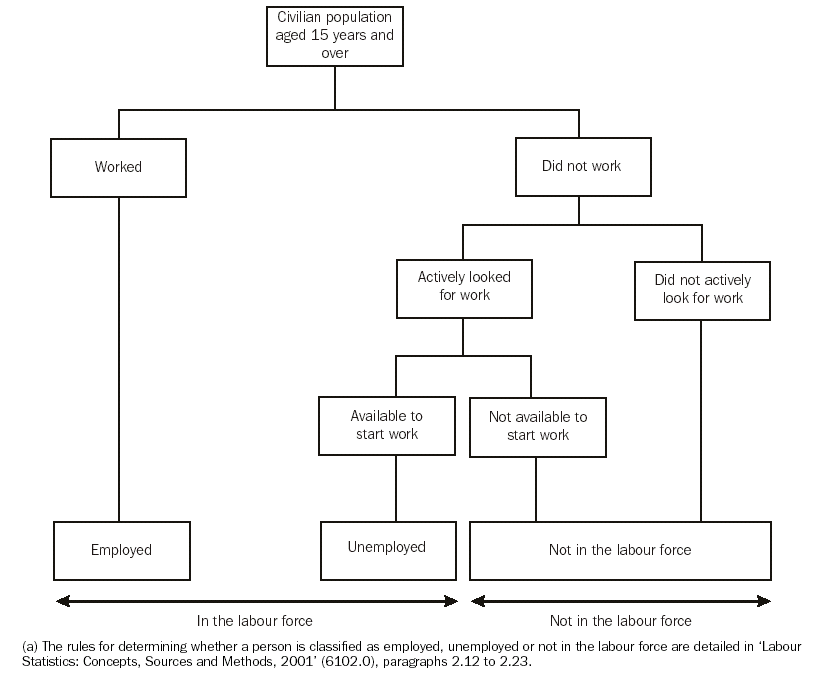Fundamental to the measurement of employment and unemployment is the concept of the labour force. The labour force represents the key official measure of the total supply of labour available to the labour market during a given period. It is equivalent to the supply of labour available for the production of economic goods and services. Therefore, persons in the labour force are also referred to as the 'currently economically active population'.
The labour force is divided into two broad groups - the employed and the unemployed. A person not classified as employed or unemployed is classified as not in the labour force (not economically active). The framework for classifying persons into these three basic categories (employed, unemployed, not in the labour force) is illustrated in diagram 6.2. Further details about the Australian labour force framework, and the specific criteria for classifying persons to these three basic categories, are available in Labour Statistics: Concepts, Sources and Methods, 2001 (6102.0).
6.2 THE AUSTRALIAN LABOUR FORCE FRAMEWORK(a)
 Source: Labour Statistics: Concepts, Sources and Methods, 2001 (6102.0).
Source: Labour Statistics: Concepts, Sources and Methods, 2001 (6102.0).